Itinerary of an Eastern Curlew: A DIY Poem-Globe
By Caroline Crowther | 12 March 2020
Hi! I'm Shastra, State Library of Queensland's inaugural reader in residence. I'm a writer, reader, and PhD candidate at The University of Queensland, where I'm trying to create poetic nuclear waste warnings that will withstand deep time. Since the middle of January, I've been roaming State Library's collections, reading Queensland Literary Awards winners and finalists, and writing poetry inspired by these works. If you see me, please say hello!
Towards the end of my previous blog, I mentioned visiting the John Oxley Library. I’ve spent many more hours there since, but I’m sure that was the day I came across the 3D print of R.F Tunley’s Braille Globe.
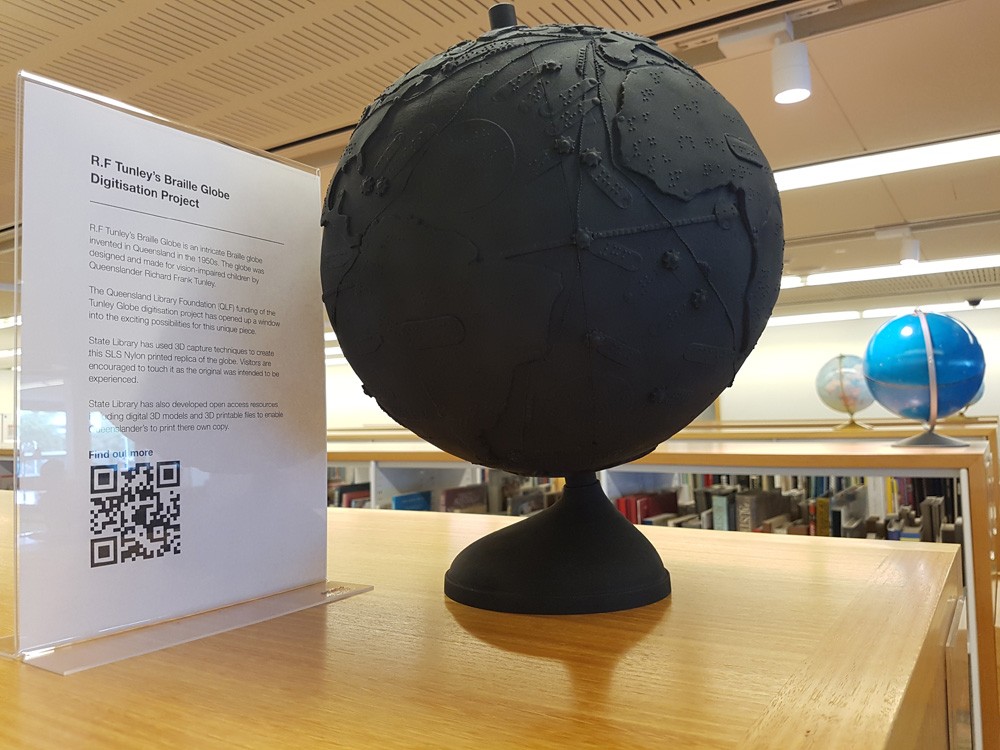
How do we read globes? How do we read our planet’s precarious geography?
I’d recently finished Harry Saddler’s The Eastern Curlew and was thinking about writing a poem in response. I knew nothing about eastern curlews prior to reading, but I’ve come to learn they’re remarkable animals. These migratory shorebirds travel 10,000 kilometres from the Australian coastline to their Arctic breeding grounds, then back again, flying through a forever-summer. In its lifetime, an eastern curlew will migrate a distance equivalent to that between the earth and the moon.
The Eastern Curlew is more than a book about a bird: it’s an extinction elegy, a provocation, a portrait of the environment and how much we stand to lose. Seeing, moving, being. In response, I wanted to write a poem that, like Saddler’s book, made the eastern curlew’s journey readable—a poem that invited the reader to make and read their own world.
Here’s what I came up with.
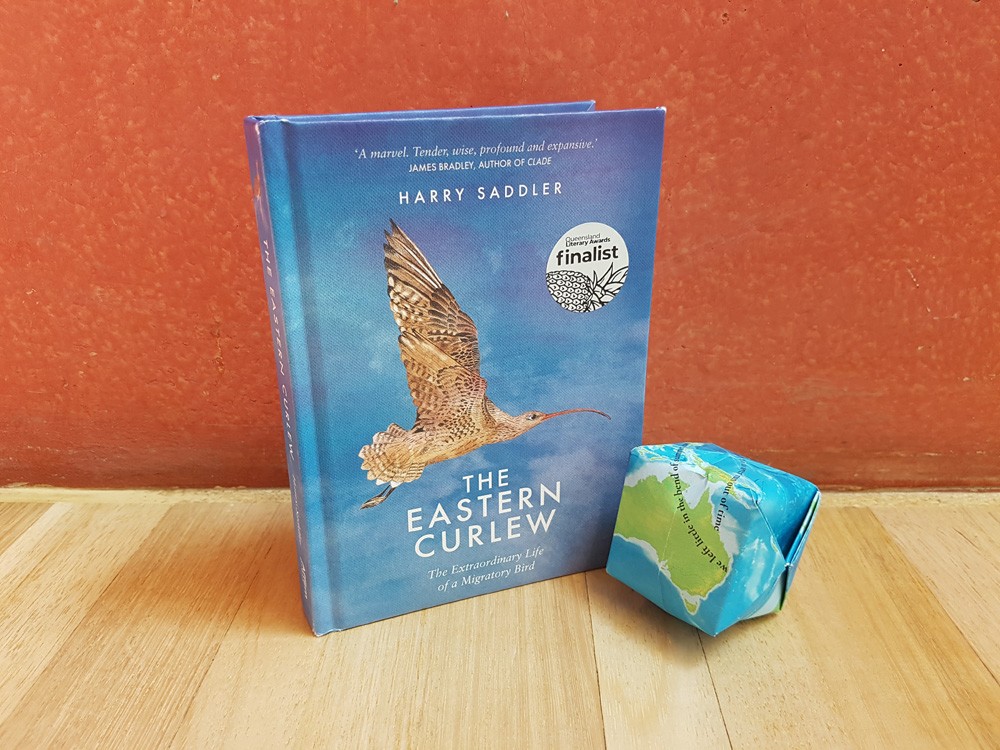
It’s an origami globe, folded out of paper, featuring the poem I wrote. Inscribed along an eastern curlew’s migration route, the text reads:
we left little in the bend
of summer. know that it is no
tragedy to live in such yearning.
our children will never see
winter. to love is to never
run out of time.
If you’d like, you can print out the below template and make your own poem-globe! Here are some instructions for folding an origami balloon to help you along. (If you run into trouble, try following these video instructions.)
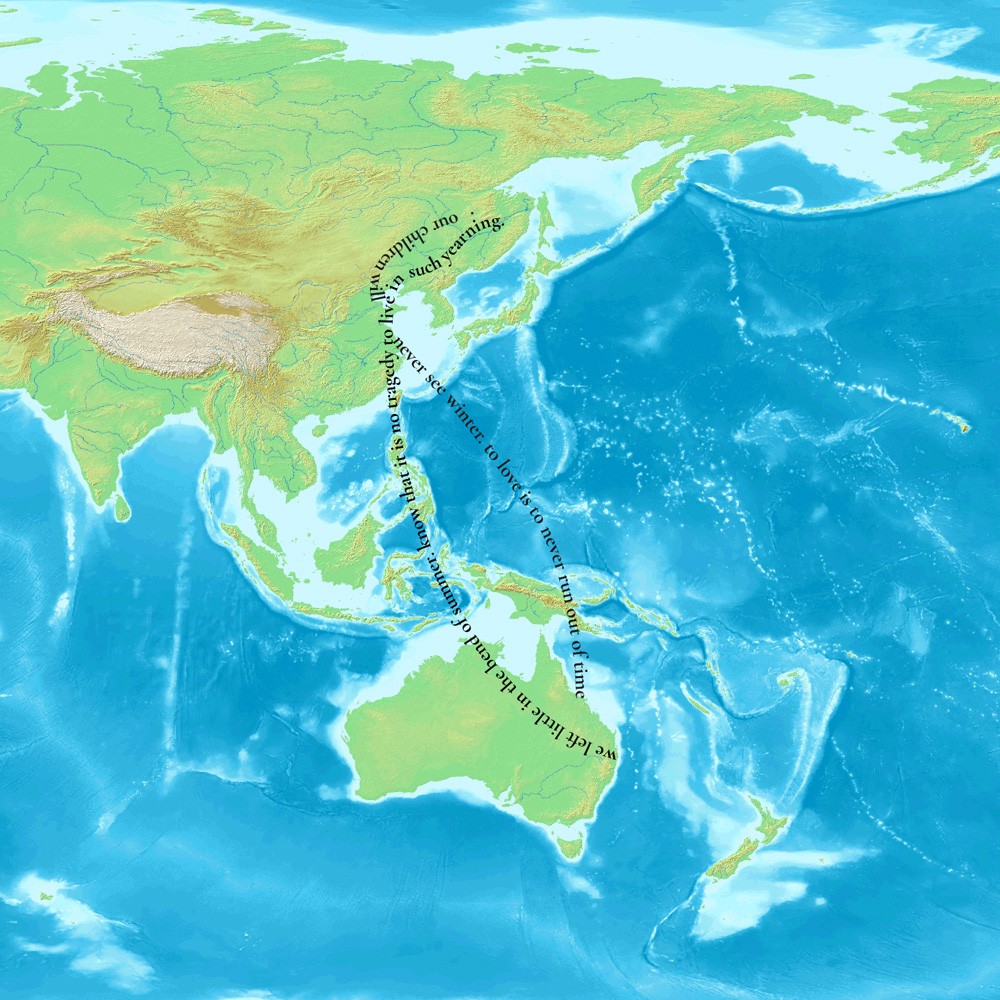
1. Print out the poem. Make sure you select “Shrink to fit” the page in the Print options, otherwise the poem won’t print properly.
2. Cut the poem into a square.
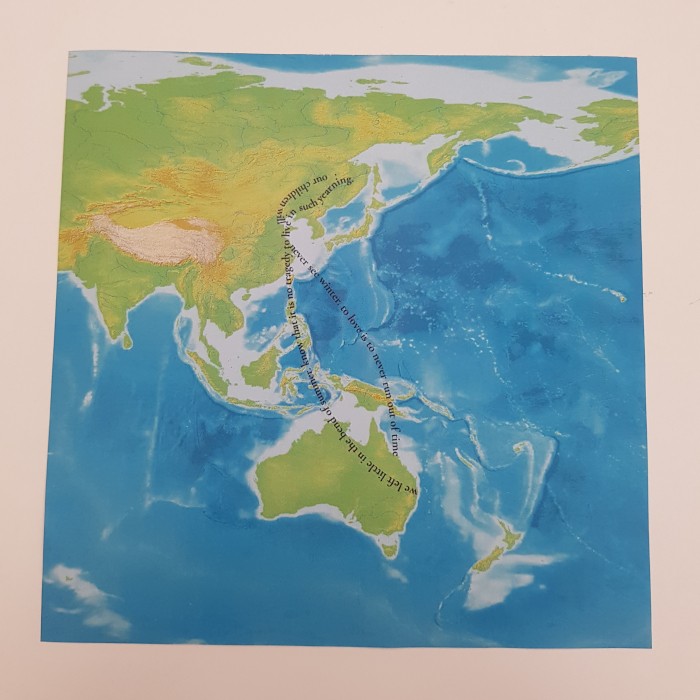
3. Fold both ways diagonally.
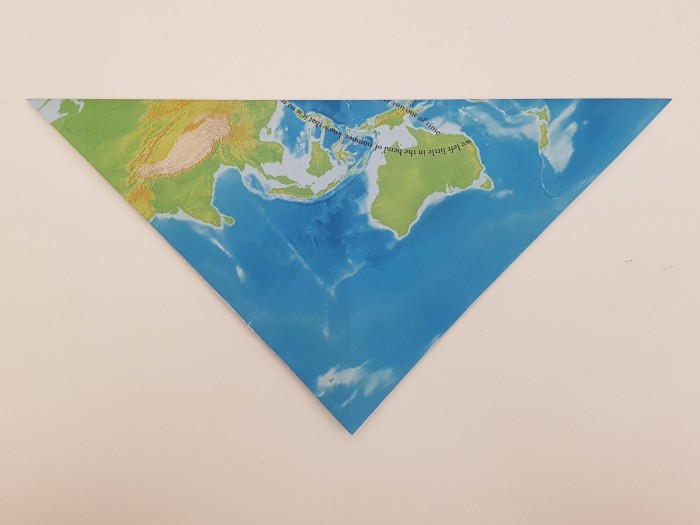
4. Fold horizontally, unfold, then fold vertically.
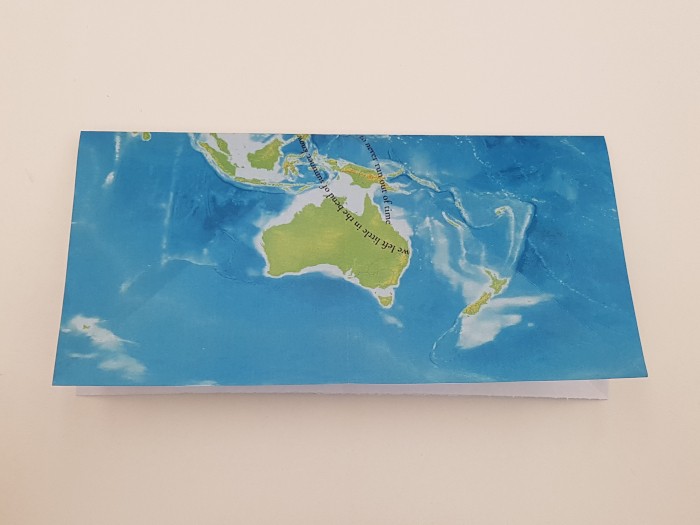
5. Use the horizontal creases in the middle to fold the upper corners in, collapsing the paper into a layered triangle.
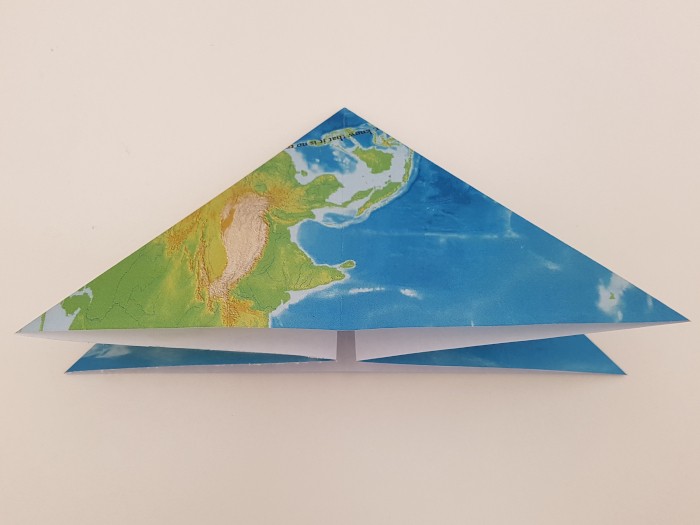
Make sure that Australia is hiding on the inside of the triangle, otherwise the text on your finished globe won’t be visible in some places.
6. Take the bottom-right corner and bring it to the top, then fold it flat. Repeat this step with the bottom left corner.
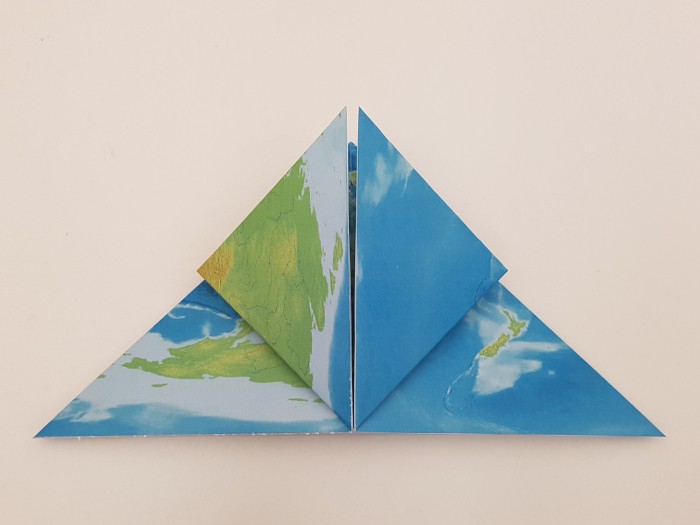
7. Turn over and repeat on the other side.
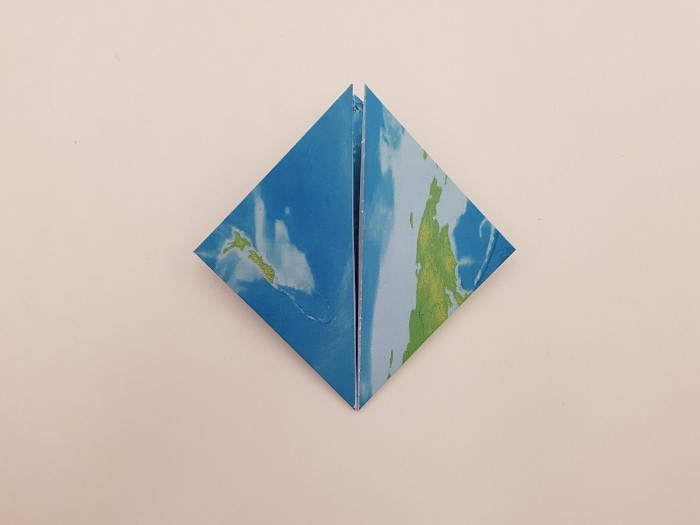
8. Fold the side points to the centre.
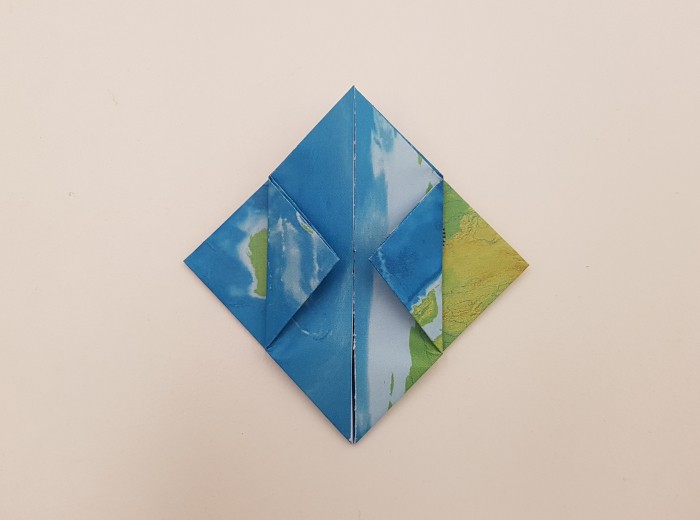
9. Turn over and repeat on the other side.
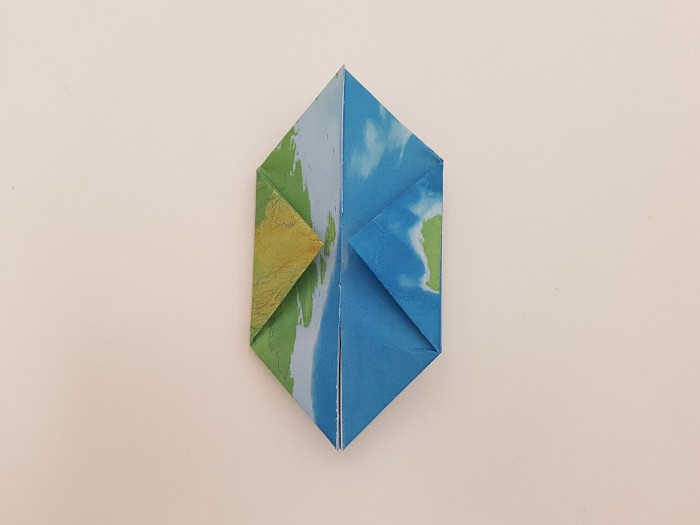
10. Open the centre pocket, tuck each top flap into it, and fold it flat. I usually fold the flaps in half before I tuck them in.
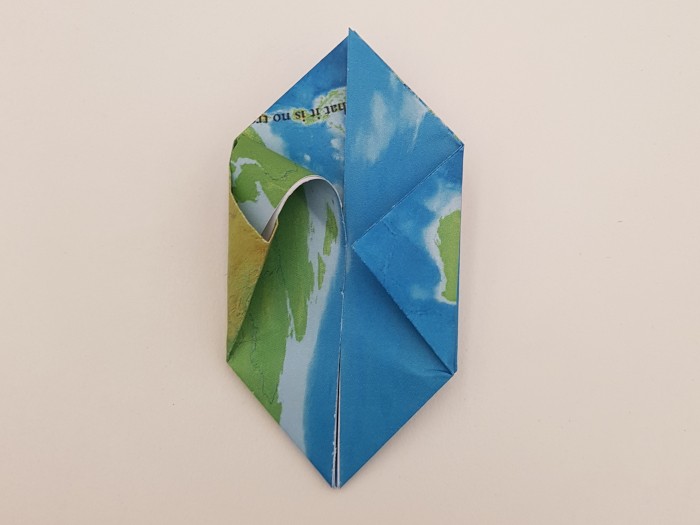
11. Turn over and repeat on the other side. The flaps should be completely tucked in.
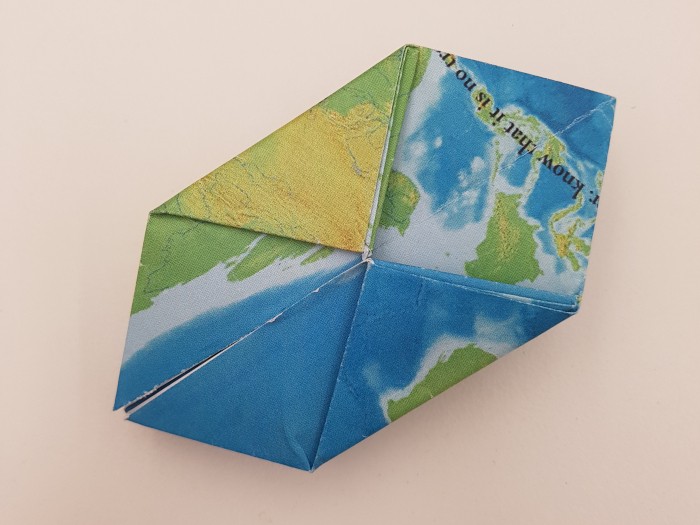
12. Gently pull at the sides and stretch out the balloon to help it expand.
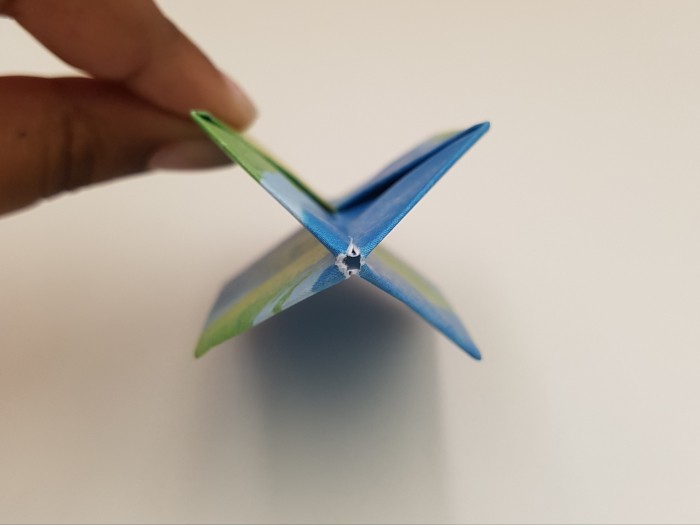
13. Blow into the hole at the end to inflate. Don’t worry if your balloon doesn’t inflate perfectly—gently pull at the sides to help it along.
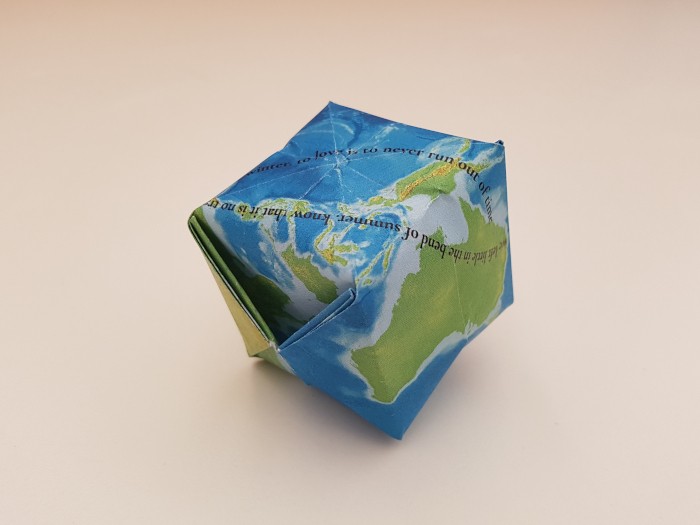
Congratulations! You now have your very own eastern curlew poem-globe! Of course, the origami balloon doesn’t lend itself to faithful remakings of the planet—the template is cropped to begin with, and the resulting folds hide away much of the earth’s geography.
But, while folding, unfolding, and refolding this poem into shape, I was reminded of how our actions—however small—can radically transform our world and its future. I hope you’ll feel the same.
Shastra Deo is a writer, reader, and PhD candidate at The University of Queensland. Her poetry collection, The Agonist (UQP 2017), won the 2016 Arts Queensland Thomas Shapcott Poetry Prize and the 2018 Australian Literature Society Gold Medal.
Comments
Your email address will not be published.
We welcome relevant, respectful comments.